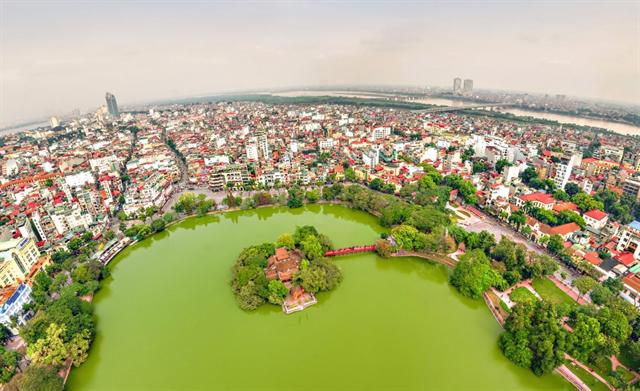For centuries, the Red River Delta has been the agricultural breadbasket of northern Vietnam, with its fertile fields sustaining generations of farming communities. Now, the region is being reimagined as the country’s next industrial and services powerhouse.
On May 4th, Prime Minister Pham Minh Chinh approved an ambitious vision to engineer just such an economic transformation by 2050.
Remaking the Delta
The newly approved “Planning of the Red River Delta for 2021-2030, vision to 2050” outlines a sweeping overhaul for the region over the next quarter century.
At its core is an effort to dramatically accelerate growth while shifting the economic base from agriculture to higher-productivity industries and services.
The numeric targets are ambitious. Over the current decade, the plan envisions the delta’s gross regional product (GRDP) expanding by a torrid 9-9.5% annually on average. That is nearly triple last year’s 3.3% national GDP growth rate. By 2030, the aim is for GRDP per capita to reach $11,000-12,000.
To underpin this scale of growth, the plan projects services swelling to 41% of GRDP by 2030, with industry at 47% and agriculture dwindling to 3.5%. The digital economy alone is envisioned to contribute over a third of output. Other goals include boosting labor productivity growth above 7% yearly, lifting the urbanization rate past 55%, and ensuring that half the workforce is skilled.
A Green Industrial Revolution
Such rapid industrialization raises concerns about severe environmental damage in a region already grappling with urban air pollution, water degradation, and biodiversity loss.
However, the planners emphasize that development must occur in an eco-friendly manner. Their mantra is building a “modern, civilized, ecological” region that is at the forefront of technology and sustainability.
This “green” vision foresees the delta becoming a national leader in science, technology, innovation, and digitalization. Modernizing the industrial base is a key priority, with high-tech sectors such as semiconductors, artificial intelligence, and robotics to be actively promoted. Building new eco-friendly infrastructure, such as urban rail networks, is also considered essential.
The broader goal is to forge a dynamic new economic engine to elevate the entire nation’s growth trajectory. “The Red River Delta is envisaged as a major economic and financial center of regional and world significance,” the plan declares. It would serve as an industrial counterweight to the bustling service-sector hub around Ho Chi Minh City in the south.

New Regional Clusters
To achieve these ambitious goals, the delta will be reorganized into distinct northern and southern sub-regions. The former encompasses existing powerhouses like the capital Hanoi and the industrial zones of Haiphong and Quang Ninh province.
This northern arc will lead development of high-value manufacturing hubs in fields such as semiconductors and robotics, while expanding services such as tourism, finance, and logistics.
In contrast, the southern sub-region spanning Thai Binh, Nam Dinh, Ha Nam, and Ninh Binh is geared towards coastal economic zones, food processing, renewable energy, and eco-tourism, capitalizing on its environmental assets.
Four urban areas – Hanoi, Bac Ninh, Quang Ninh, and Haiphong – are designated as primary “growth poles”. Their development will be turbocharged by five major new transportation arteries, including two








































